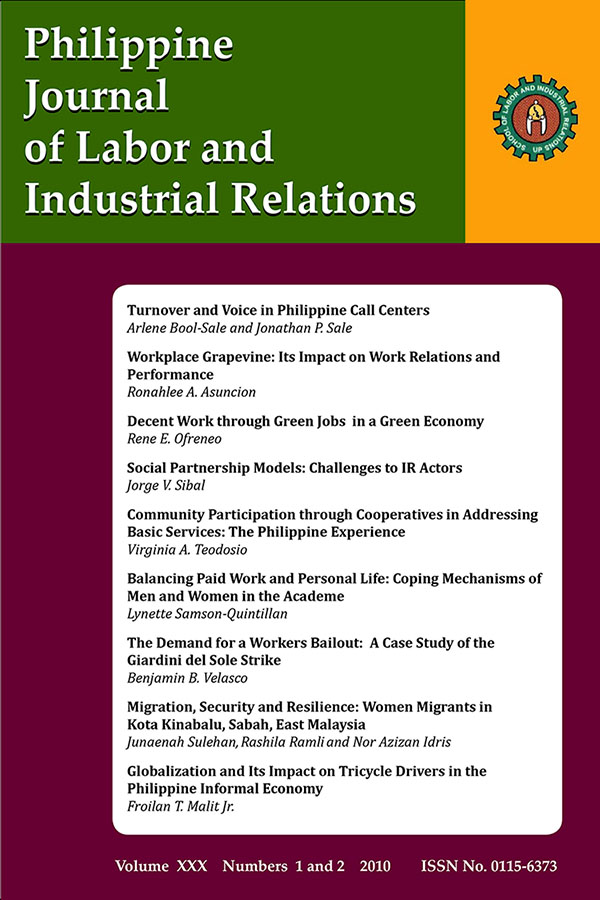Turnover and Voice in Philippine Call Centers
Abstract
In this study on Philippine call centers and business process outsourcing (BPO) firms, the authors take a closer look at the model for employee voluntary turnover developed by March and Simon (1958) and cited by Kochan (1980). Based on the model, turnover is affected by two factors,
that is, ease of leaving and desirability of leaving a firm. Ease of leaving a firm is primarily determined by alternative employment opportunities outside the firm. This means that the more attractive the labor market
outside the firm, the higher the probability of leaving. The desire to leave is a function of dissatisfaction at the current job, that is the higher the dissatisfaction level, the greater the probability of leaving. However, if there is opportunity to voice out employee dissatisfaction that would lead to changes in work conditions, employees might choose the “voice” rather than the “exit” option. Thus, Hirschman’s (1970) exit, voice and loyalty model, Rusbult, et al.’s (1982) contribution thereto and Hyman’s thoughts on unions are also explored, together with recent legislation on the right to unionize. Building on information generated from their previous studies and using new data on turnover rates, the authors try to determine and explain the relationship, if any, between turnover and voice in call centers and BPOs. Do turnover rates relect the demand for voice? If so, what voice mechanisms need to be put in place? Are there existing voice mechanisms? These are some questions that the study hopes to address.


